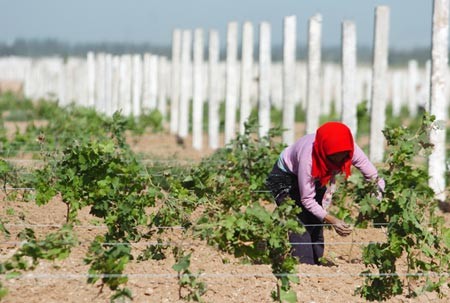A total of 48 winemakers from 18 nations are up for the cash prizes at stake for the Ningxia Wine Challenge, a two-year competition named after China's top wine-producing region.
The challenge, which offers 600,000 yuan worth of prizes, was organized by the wine federation of the Ningxia Hui Autonomous Region. It is also largely supported by its Bureau of Grape Industry Development.
Through a lottery system partnered with wineries and winemakers, each participating team is granted with three hectares of cabernet sauvignon grapes the contestants will use to make wine.
Currently, the products are in fermentation tanks. They are set to be judged in 2017. The top 10 percent will receive 100,000 yuan each and the next 20 percent will be granted with 20,000 yuan each.
Each winemaker will also be given with several thousand bottles of the wine he or she has made.
For Alessio Fortunato, a participant from Italy and is a professor at the Northwest Agriculture and Forestry University in the Shaanxi Province, the contest "is a good opportunity for many to experience the potential of Ningxia first-hand."
Meanwhile, Jim Boyce, the organizer of the project for Ningxia trade group, stated the enormity and a brief history of the said competition.
"No other wine region has attempted a competition on the scale of the Ningxia Wine Challenge," he shared.
He added: "It follows a smaller Ningxia project that ran from 2012 to 2014 with seven foreign winemakers. The key goals include raising the region's profile and facilitating both cultural and technical exchanges. Participants were chosen from more than 140 applicants by a panel of independent judges in Argentina, Australia, China and the United States."
For the past dozen years, the wine industry of Ningxia has witnessed substantial development, with vineyard coverage increasing to 30,000 hectares and the number of wineries amounting to 70.



























